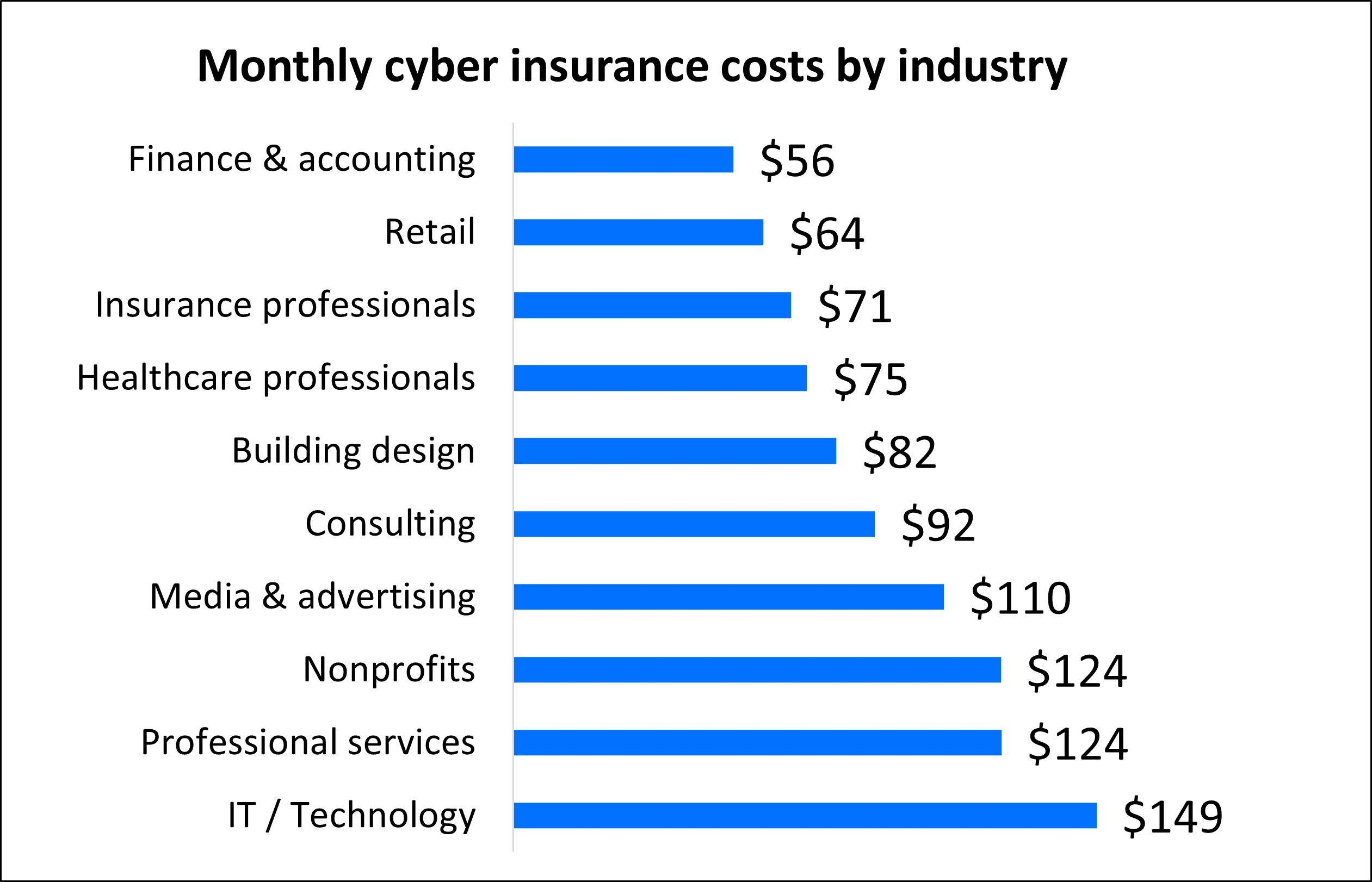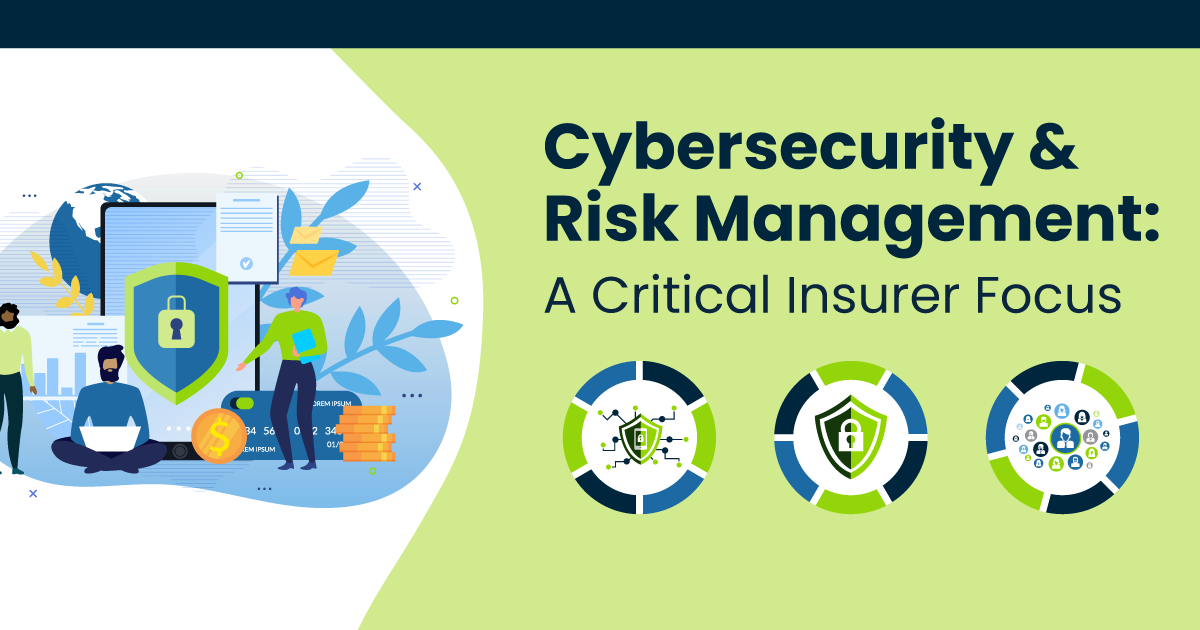Introduction
As technology continues to advance and businesses rely more heavily on digital infrastructure, the risk of cyber threats and data breaches has become a growing concern. In today’s interconnected world, a single security breach can result in significant financial losses, reputational damage, and legal consequences.
That’s where cybersecurity insurance comes into play. Cybersecurity insurance, also known as cyber liability insurance or data breach insurance, is designed to protect businesses from the financial implications of cyber attacks and breaches. It provides coverage for expenses related to investigation, notification, legal fees, and potential lawsuits, as well as third-party liabilities.
However, one of the key considerations for businesses when it comes to cybersecurity insurance is the cost. The cost of cybersecurity insurance varies depending on several factors, and understanding these factors can help businesses assess their cybersecurity risks and make informed decisions about coverage.
In this article, we will explore the factors that affect the cost of cybersecurity insurance and provide insights to help businesses evaluate their insurance needs and obtain suitable coverage at a reasonable cost. From risk assessment and coverage limits to industry type, business size, and claims history, we will delve into the various aspects that insurers consider when determining the cost of cybersecurity insurance.
By understanding these factors, businesses can take steps to mitigate their risks, implement effective cybersecurity measures, and explore different insurance providers to obtain accurate quotes that align with their budget and coverage requirements.
So, without further ado, let’s dive into the factors that determine the cost of cybersecurity insurance and explore how businesses can navigate this crucial aspect of protecting their digital assets and finances.
Factors that Affect Cybersecurity Insurance Costs
When it comes to determining the cost of cybersecurity insurance, insurers take several factors into consideration. These factors help them assess the level of risk associated with insuring a particular business and ultimately determine the premium. Let’s take a closer look at the key factors that affect cybersecurity insurance costs:
- Risk Assessment and Coverage Limits: Insurers consider the risk profile of a business when determining the cost of cybersecurity insurance. Factors such as the sensitivity of data stored, the vulnerability of the network infrastructure, and the potential financial impact of a breach are taken into account. Additionally, the desired coverage limits also play a role in determining the premium. Businesses with higher coverage limits will likely pay a higher premium to ensure comprehensive protection.
- Type of Business and Industry: The nature of a business and the industry it operates in can significantly influence the cost of cybersecurity insurance. Certain industries, such as healthcare and finance, deal with highly sensitive data and are therefore considered higher risk. Similarly, businesses that handle large volumes of customer data or rely heavily on technology may also be subject to higher premiums.
- Size and Revenue of the Business: The size and revenue of a business are important factors in determining the cost of cybersecurity insurance. Larger companies with higher revenues generally have more complex cybersecurity requirements and are therefore likely to pay higher premiums. Insurers may consider factors like the number of employees, annual revenue, and the geographic footprint of the business when assessing the cost.
- Security Measures and Policies in Place: Insurers often evaluate the security measures and policies that a business has implemented to mitigate cyber risks. Businesses with robust cybersecurity practices, such as regular system updates, employee training, and network monitoring, are generally seen as lower risk and may receive lower insurance premiums. Demonstrating a commitment to proactive risk management can lead to more favorable rates.
- Claims History and Cybersecurity Incidents: A business’s claims history and past cybersecurity incidents can have an impact on the cost of insurance. Companies with a history of frequent claims or significant security breaches may be considered higher risk, resulting in higher premiums. On the other hand, businesses with a clean claims history and minimal past incidents may enjoy more competitive rates.
It’s important to note that these factors are not independent of each other and may interact in complex ways. Insurers assess the overall risk profile of a business based on a combination of these factors to determine the cost of cybersecurity insurance. Therefore, businesses should carefully evaluate their specific circumstances in relation to these factors to understand how they may influence their insurance costs.
Now that we have explored the key factors that affect the cost of cybersecurity insurance, let’s move on to the next section, where we will discuss how businesses can evaluate different cybersecurity insurance providers and obtain accurate quotes.
Risk Assessment and Coverage Limits
When it comes to determining the cost of cybersecurity insurance, one of the key factors that insurers consider is the risk assessment of a business and the desired coverage limits. Let’s take a closer look at how risk assessment and coverage limits factor into the cost of cybersecurity insurance:
Risk Assessment: Insurers assess the risk profile of a business to understand the likelihood and potential impact of a cyber attack or data breach. They consider various factors, such as the sensitivity of the data stored, the vulnerabilities in the network infrastructure, and the effectiveness of the business’s cybersecurity measures. A comprehensive risk assessment helps insurers determine the level of risk associated with insuring a particular business, which can directly impact the cost of cybersecurity insurance. Businesses with higher levels of risk may face higher premiums compared to those deemed lower risk.
Coverage Limits: The desired coverage limits also play a significant role in determining the cost of cybersecurity insurance. Coverage limits refer to the maximum amount the insurance policy will pay in the event of a cyber incident. Naturally, higher coverage limits provide more extensive protection but also increase the potential payout for the insurer. Consequently, higher coverage limits typically come with higher premiums. Businesses need to carefully assess their cybersecurity risks and evaluate the potential financial consequences of a breach to determine appropriate coverage limits that align with their risk tolerance and budget.
When evaluating risk and coverage limits, businesses should consider factors such as the type of data they handle, the value of their digital assets, and the potential costs associated with a cyber incident. For instance, a healthcare organization that deals with highly sensitive patient data may require higher coverage limits compared to a small retail business that primarily handles customer contact information. By understanding the specific risks and assessing appropriate coverage limits, businesses can work with insurers to obtain accurate quotes tailored to their needs.
It’s also important to note that risk assessment and coverage limits are intertwined. Businesses with higher levels of risk may need higher coverage limits to adequately protect themselves, and as a result, may face higher premiums. Conversely, businesses with lower levels of risk may be able to secure coverage with lower limits, potentially leading to more affordable premiums. Therefore, it’s crucial for businesses to conduct a comprehensive risk assessment and carefully evaluate their coverage needs to strike the right balance between adequate protection and realistic cost.
Now that we have covered the importance of risk assessment and coverage limits in determining the cost of cybersecurity insurance, let’s move on to the next section, where we will discuss the influence of the type of business and industry on insurance costs.
Type of Business and Industry
When it comes to cybersecurity insurance costs, the type of business and industry in which a company operates plays a significant role. Insurers consider the unique risks and vulnerabilities associated with different business types and industries, which can influence the cost of cybersecurity insurance. Let’s explore how the type of business and industry impact insurance costs:
Risk Profile: Certain industries, such as healthcare, finance, and e-commerce, are more susceptible to cyberattacks and data breaches due to the types of data they handle or the value of their assets. Insurers take this into account when assessing the risk profile of a business and determining the premium. For example, healthcare organizations that store medical records and personal health information may face higher insurance costs due to the potential severity and regulatory implications of a breach. Similarly, financial institutions that handle sensitive financial data may be subject to higher premiums to account for the potential financial losses involved in a cyber incident.
Regulatory Requirements: Different industries have varying regulatory requirements related to data privacy and cybersecurity. These regulations often establish minimum standards and safeguards that businesses must adhere to. Insurers may consider whether a business meets these regulatory requirements or implements additional security measures beyond the minimum standards. Businesses that demonstrate compliance with industry-specific regulations may be viewed as lower risk and may qualify for more favorable insurance premiums.
Digital Footprint: The digital footprint of a business refers to the extent to which a company relies on technology, online platforms, and digital infrastructure to conduct its operations. Industries with a larger digital footprint, such as technology companies or online retailers, may be more attractive targets for cybercriminals. Consequently, insurers may perceive these businesses as higher risk and charge higher premiums to provide adequate coverage.
Size and Value of Data: The size of a business and the value of the data it handles can also impact insurance costs. Larger organizations typically have more complex network infrastructures and handle larger volumes of data, resulting in increased exposure to cyber risks. Insurers may take into account the size of a company’s operations, including the number of employees and customers, when assessing the potential impact of a cyber incident. Additionally, the value of the data, whether it includes intellectual property, trade secrets, or sensitive customer information, can also influence insurance costs.
It is essential for businesses to be aware of how their industry and type of business can affect the cost of cybersecurity insurance. By understanding the unique risks associated with their sector and implementing industry-specific security measures, businesses can position themselves to negotiate competitive premiums. Working closely with insurance providers that specialize in their industry can also help businesses obtain tailored coverage and accurate quotes that reflect their specific needs and risk profile.
Now that we have explored the influence of the type of business and industry on cybersecurity insurance costs, let’s move on to the next section, where we will discuss the impact of the size and revenue of a business on insurance costs.
Size and Revenue of the Business
When it comes to determining the cost of cybersecurity insurance, the size and revenue of a business are important factors that insurers consider. The size of a business refers to its scale, including the number of employees, physical locations, and overall operations. The revenue of a business indicates its financial strength and stability. Let’s explore how the size and revenue of a business can impact cybersecurity insurance costs:
Complexity of Operations: Larger businesses tend to have more complex network infrastructures and a greater number of endpoints, which increases the potential attack surface for cybercriminals. The complexity of a business’s operations often means more comprehensive coverage is required, resulting in higher insurance costs. Additionally, larger businesses typically handle a larger volume of data, which may contain sensitive customer information or valuable intellectual property, adding to the insurance risk and influencing premiums.
Risk Exposure: The size and revenue of a business can also indicate its risk exposure to cyber threats. Cybercriminals may target larger organizations due to the potentially significant financial gains from a successful attack. Insurers take this into account when assessing risk and determining the cost of cybersecurity insurance. Businesses with higher revenue and a larger customer base may face higher premiums to adequately protect against potential losses resulting from a cyber incident.
Resources for Risk Management: The financial resources available to a business for risk management and cybersecurity initiatives can also influence insurance costs. Larger companies often have dedicated IT and cybersecurity teams, robust security infrastructures, and the ability to invest in advanced technologies and training programs. Demonstrating strong risk management practices and adequate resources for cybersecurity can potentially lead to lower insurance costs, as insurers may view these businesses as better prepared to mitigate risks.
Scale of Coverage: Insurance costs are directly influenced by the coverage limits and types of coverage that a business requires. Larger businesses often require higher coverage limits to adequately protect their assets and operations. Similarly, they may opt for diverse coverage options such as business interruption coverage, reputational harm coverage, and post-breach services. These additional coverage options can contribute to higher premiums compared to smaller businesses with less extensive coverage requirements.
It’s important for businesses to assess their size and revenue in relation to their cybersecurity insurance needs. While larger businesses may face higher insurance costs, they also have more resources and capabilities to implement robust cybersecurity measures. Smaller businesses must carefully evaluate their risk exposure and coverage requirements to ensure appropriate protection within their budget constraints.
Now that we have discussed the impact of the size and revenue of a business on cybersecurity insurance costs, let’s move on to the next section, where we will explore the significance of security measures and policies in determining insurance premiums.
Security Measures and Policies in Place
When it comes to cybersecurity insurance, the security measures and policies that a business has in place play a crucial role in determining the cost of insurance coverage. Insurers assess the effectiveness of a company’s cybersecurity practices and policies to determine the level of risk associated with insuring that business. Let’s take a closer look at how security measures and policies influence insurance premiums:
Proactive Risk Management: Businesses that have implemented strong security measures and policies demonstrate a commitment to proactive risk management. These measures may include regular software updates and patches, employee cybersecurity training programs, intrusion detection systems, and network monitoring. Insurers consider these practices when assessing the level of risk associated with a business. Companies that can demonstrate robust risk management practices may be viewed as lower risk and can potentially qualify for more favorable insurance premiums.
Encryption and Data Protection: Insurers also take into account the encryption and data protection measures implemented by a business. Encryption is the process of encoding data to prevent unauthorized access, and it is a critical safeguard for sensitive information. Businesses that have implemented robust encryption measures to protect customer data, intellectual property, or other sensitive information are generally seen as lower risk. Consequently, they may benefit from lower insurance premiums compared to businesses with weaker data protection measures.
Incident Response Plan: Insurers also consider whether a business has an effective incident response plan in place. An incident response plan outlines the steps and procedures to be followed in the event of a cyber incident or breach. Businesses with well-documented and tested incident response plans can demonstrate their preparedness to handle cybersecurity incidents promptly and effectively, which may result in more favorable insurance premiums.
Cybersecurity Policies and Compliance: Insurers often assess whether a business has implemented cybersecurity policies and complies with industry standards and regulations. Policies can outline acceptable use of technology, password requirements, and employee responsibilities for safeguarding data. Compliance with industry-specific regulations, such as the General Data Protection Regulation (GDPR) or the Payment Card Industry Data Security Standard (PCI DSS), can also positively impact insurance premiums. Businesses that demonstrate a commitment to meet and exceed these standards may be viewed as lower risk.
Third-Party Audits and Assessments: Some insurers may require or offer incentives for businesses to undergo third-party audits and assessments. These independent assessments evaluate the effectiveness of a business’s cybersecurity controls and identify areas for improvement. Undertaking third-party audits and assessments can provide insurers with additional confidence in a business’s security measures, potentially resulting in more competitive insurance premiums.
Businesses should strive to implement and continually improve their security measures and policies to enhance their cybersecurity posture and potentially reduce insurance costs. Working closely with insurers and seeking their guidance on best practices and risk mitigation strategies can help businesses identify areas for improvement and secure more favorable insurance premiums.
Now that we have explored the significance of security measures and policies in determining insurance premiums, let’s move on to the next section, where we will discuss the impact of claims history and past cybersecurity incidents on insurance costs.
Claims History and Cybersecurity Incidents
When it comes to determining the cost of cybersecurity insurance, insurers take into account a business’s claims history and past cybersecurity incidents. These factors provide insight into the risk profile of the business and can directly impact insurance costs. Let’s delve into how claims history and cybersecurity incidents influence insurance premiums:
Claims History: Insurers will assess a business’s claims history to understand the frequency and severity of previous incidents. A history of frequent claims or significant cybersecurity breaches indicates a higher risk level. Businesses with a track record of multiple claims may be viewed as more susceptible to cyber threats or ineffective in managing their cybersecurity. As a result, they may face higher premiums as insurers adjust for the potential costs involved in insuring against cyber incidents.
Cybersecurity Incidents: The severity and nature of past cybersecurity incidents can also influence insurance costs. Insurers will consider the types of attacks or breaches experienced by a business and the resulting consequences. High-profile incidents that have attracted media attention or led to substantial financial losses may lead to increased insurance premiums. Additionally, the reputational damage caused by cyber incidents can impact insurance costs as insurers assess the potential long-term business impact and associated liability.
Response and Mitigation Efforts: Insurers will also evaluate a business’s response and mitigation efforts following cybersecurity incidents. Businesses that demonstrate effective incident response and take immediate action to mitigate the impact of the incident may be seen as lower risk. Insurers may reward proactive efforts and effective response measures with more favorable insurance premiums. Conversely, businesses that had slow or inadequate responses to incidents may face higher premiums to account for the potential financial losses and reputational damage associated with future incidents.
Improvement Plans: Following a cybersecurity incident, businesses that implement remediation measures and demonstrate plans for future enhancements in their cybersecurity practices may benefit from lower insurance premiums. Insurers recognize the importance of continuous improvement and risk reduction, and businesses that actively work to strengthen their security posture may receive more favorable rates as a result.
It’s important for businesses to be transparent with insurers about their claims history and past cybersecurity incidents. Open communication allows insurers to assess the specific circumstances and understand the steps taken to minimize future risks. By working closely with insurers, businesses can demonstrate their commitment to cybersecurity and potentially negotiate more favorable insurance premiums based on their post-incident measures and future risk mitigation efforts.
Now that we have explored the impact of claims history and past cybersecurity incidents on insurance costs, let’s move on to the next section, where we will discuss how businesses can evaluate different cybersecurity insurance providers and obtain accurate quotes.
Evaluating Different Cybersecurity Insurance Providers
When selecting a cybersecurity insurance provider, businesses need to carefully evaluate their options to ensure they obtain suitable coverage at a reasonable cost. Evaluating different cybersecurity insurance providers involves assessing several key factors. Let’s explore the essential considerations when evaluating different providers:
Experience and Expertise: Look for insurance providers with experience and expertise in cybersecurity insurance. Consider their track record, reputation, and the types of businesses they have served. An insurance provider with a deep understanding of the unique risks and challenges in your industry can offer tailored coverage and valuable insights.
Available Coverage Options: Assess the coverage options offered by each provider. Look for a comprehensive range of coverage that aligns with the specific needs of your business. Consider coverage for data breaches, legal expenses, business interruption, reputational harm, and other cyber-related incidents. Understanding the scope and limits of coverage is crucial to ensure you are adequately protected.
Policy Terms and Conditions: Carefully review the terms and conditions of each policy. Pay attention to exclusions, limitations, deductibles, and waiting periods. Ensure that the policy terms align with your risk management strategy and that you have a clear understanding of what is covered and what is not.
Financial Stability: Evaluate the financial stability of the insurance provider. You want to ensure that they have the financial capacity to honor claims and provide the necessary support in the event of a cybersecurity incident. Check their financial ratings and consider their track record of claim settlements.
Customer Support: Assess the level of customer support provided by each insurance provider. Look for providers that offer prompt and responsive customer service. Having a dedicated point of contact who can address your inquiries and provide assistance in the event of a claim is crucial for a smooth and efficient claims process.
Cost and Pricing: Finally, compare the cost and pricing structures of different insurance providers. Obtain multiple quotes from different providers and carefully evaluate them in relation to your coverage needs. Consider factors such as the premium rates, deductibles, and any additional fees or discounts offered. Ensure that the cost aligns with your budget while providing the desired level of protection.
Once you have evaluated different cybersecurity insurance providers based on these factors, you can make an informed decision about the most suitable provider for your business. Keep in mind that cybersecurity insurance is an ongoing partnership, so choosing a provider that understands and meets your evolving needs is crucial for long-term success.
Now that we have discussed how to evaluate different cybersecurity insurance providers, let’s move on to the next section, where we will explore the process of obtaining quotes and comparing costs.
Obtaining Quotes and Comparing Costs
Obtaining quotes and comparing costs is a crucial step in the process of securing cybersecurity insurance. It allows businesses to assess the affordability and value of coverage offered by different insurance providers. Here’s a step-by-step guide on how to obtain quotes and effectively compare costs:
1. Identify Insurance Providers: Begin by identifying insurance providers that specialize in cybersecurity insurance. Research online, seek recommendations from industry peers, or consult with insurance brokers who have experience in this specific field.
2. Provide Detailed Information: Reach out to the selected insurance providers and provide them with detailed information about your business. Be prepared to share specifics about your industry, the type of data you handle, your security measures, and any previous cybersecurity incidents or claims history. The more accurate and comprehensive the information you provide, the more accurate the quotes you receive will be.
3. Request Quotes: Request quotes from multiple insurance providers. Seek quotes that align with your coverage needs and any specific requirements unique to your business. Be sure to request quotes with consistent coverage limits and deductibles to facilitate an apples-to-apples comparison.
4. Review Coverage Details: Carefully review the coverage details outlined in each quote. Look for any variations in the scope of coverage, exclusions, or limitations. Pay attention to any additional endorsements or enhancements that may benefit your business.
5. Assess Premiums and Deductibles: Assess the premiums and deductibles associated with each quote. Consider the overall cost of the coverage and how it fits into your budget. Pay attention to any discounts or additional fees that may impact the final cost.
6. Compare Policy Terms: Compare the specific terms and conditions of each policy. Consider any waiting periods, sub-limits, or policy renewal provisions. Assess how each policy aligns with your risk management strategy and any contractual obligations you may have to meet.
7. Consider Customer Support: Evaluate the level of customer support offered by each insurance provider. Consider factors such as their responsiveness, claims process efficiency, and availability of dedicated account managers. Good customer support can greatly enhance the overall insurance experience.
8. Seek Clarification: Seek clarification from insurance providers regarding any concerns or questions you may have. Ask for additional information or explanations on any aspects that require further understanding to make an informed decision.
9. Consider Recommendations: Seek recommendations or testimonials from other businesses that have obtained cybersecurity insurance from the providers you are considering. This can provide insights into the quality of coverage and the overall experience of working with each insurance provider.
10. Make an Informed Decision: Based on the comparison of coverage, premiums, terms, and customer support, make an informed decision on the cybersecurity insurance provider that best meets your needs. Choose a provider that provides adequate coverage at a reasonable cost, while also demonstrating strong customer support and expertise in cybersecurity insurance.
By following these steps, businesses can obtain accurate quotes and effectively compare costs to make an informed decision when selecting their cybersecurity insurance provider. Remember to regularly review your coverage and reassess your needs as your business evolves or new risks emerge.
Now that we have discussed how to obtain quotes and compare costs, let’s move on to the next section, where we will explore the concept of deductibles and premiums in cybersecurity insurance.
Understanding Deductibles and Premiums
When it comes to cybersecurity insurance, understanding deductibles and premiums is essential in determining the cost of coverage and the financial implications of a claim. Let’s explore the concepts of deductibles and premiums and their significance in cybersecurity insurance:
Deductibles: A deductible is the amount that a policyholder must pay out of pocket before the insurance coverage kicks in. For cybersecurity insurance, the deductible is typically a fixed dollar amount or a percentage of the claim. The purpose of a deductible is to align the policyholder’s risk with the insurance coverage and encourage responsible risk management. Higher deductibles generally result in lower insurance premiums, as the policyholder assumes more of the financial risk in the event of a claim. It’s important to carefully review and understand the deductible amount stated in the insurance policy, as it will impact the overall cost of coverage and the financial burden in the event of a claim.
Premiums: Premiums are the periodic payments made by a policyholder to the insurance provider in exchange for coverage. In the context of cybersecurity insurance, the premium is the cost of insuring against cyber risks and protecting the business against potential financial losses. The premium is typically determined based on various factors, including the size and revenue of the business, industry type, risk assessment, claims history, and security measures in place. Higher-risk businesses or those with a history of claims may face higher premiums due to the increased likelihood of cyber incidents. Conversely, businesses that have implemented robust cybersecurity measures and demonstrate a low risk profile may qualify for lower premiums.
When considering deductibles and premiums, it’s important for businesses to strike a balance between affordable premiums and appropriate deductible levels. Here are a few key considerations:
Risk Tolerance: Assess your risk tolerance as a business. Evaluate the potential financial impact of a cyber incident and determine how much risk you are willing to assume. If you have a high risk tolerance and can absorb larger financial losses, you may opt for a higher deductible to secure lower premiums.
Budget Constraints: Consider your budget constraints. Determine how much you can allocate for cybersecurity insurance premiums while maintaining financial stability. Keep in mind that premiums should be reasonable and affordable for your business to manage.
Return on Investment: Evaluate the potential return on investment (ROI) of different deductible and premium levels. Consider the financial benefits of a lower premium versus the additional financial burden of a higher deductible in the event of a claim. It’s important to find the right balance that provides adequate coverage while aligning with your financial goals.
Policy Coverage and Limits: Assess the coverage offered by the policy and the coverage limits alongside the deductibles and premiums. Ensure that the coverage aligns with your business’s specific needs and risk profile. Avoid solely focusing on the cost aspect and carefully consider the value of the coverage provided.
By understanding deductibles and premiums in cybersecurity insurance, businesses can make informed decisions when selecting coverage options. It’s crucial to assess your risk tolerance, budget constraints, and the desired level of coverage to strike the right balance. Consult with insurance professionals to gain insights and guidance in evaluating deductibles and premiums that align with your business’s unique needs.
Now that we have discussed deductibles and premiums, let’s move on to the next section, where we will explore additional considerations before purchasing cybersecurity insurance.
Additional Considerations Before Purchasing Cybersecurity Insurance
Before purchasing cybersecurity insurance, there are several additional considerations that businesses should keep in mind. While evaluating coverage options and costs is crucial, it’s also important to think about the broader aspects of cybersecurity insurance. Let’s explore these additional considerations:
Risk Assessment: Conduct a thorough risk assessment of your business before purchasing cybersecurity insurance. Identify and prioritize potential cyber threats and vulnerabilities specific to your industry and operations. This assessment will help you understand your insurance needs and guide you in selecting the appropriate coverage options.
Contract Review: Carefully review any existing contracts, including client agreements or vendor contracts, to understand any insurance requirements or indemnification clauses. Ensure that the cybersecurity insurance coverage you choose meets the contractual obligations imposed by your business partners or regulatory entities.
Legal and Regulatory Compliance: Consider legal and regulatory requirements related to cybersecurity insurance. Understand any industry-specific regulations that may require a particular level of coverage or specific endorsements. Compliance with these regulations can help protect your business and provide peace of mind.
Claims Process: Gain a clear understanding of the claims process before purchasing cybersecurity insurance. Review the insurer’s claim submission guidelines, documentation requirements, and the expected timeline for claim resolution. A smooth and efficient claims process is crucial in the event of a cyber incident.
Policy Exclusions and Limitations: Carefully review the policy exclusions and limitations to fully understand the scope of coverage. Identify any areas where coverage may be limited, such as certain types of cyber threats or specific types of data breaches. Be aware of any policy restrictions that may impact your business’s unique risk profile.
Coordination with Existing Insurance Policies: Consider how cybersecurity insurance will coordinate with your existing insurance policies, such as general liability or professional liability coverage. Ensure that there are no gaps or overlaps in coverage that could leave your business vulnerable to financial losses.
Cybersecurity Best Practices: Implement cybersecurity best practices within your organization. Insurance is just one component of a comprehensive cybersecurity strategy. Implementing robust security measures, employee training programs, and regular vulnerability assessments can help reduce the likelihood of cyber incidents and contribute to more favorable insurance terms.
Continual Assessment and Updating: Remember that cybersecurity risks evolve over time. Regularly reassess your insurance coverage and risk management practices to ensure they remain aligned with current threats and industry trends. Engage in ongoing communication with your insurance provider to stay updated on any changes in coverage options or new risk mitigation strategies.
By considering these additional factors, businesses can make well-informed decisions before purchasing cybersecurity insurance. The combination of a comprehensive risk assessment, contract review, compliance with legal and regulatory requirements, and coordination with existing policies will help ensure that your business is adequately protected against cyber risks.
Now that we have discussed the additional considerations for purchasing cybersecurity insurance, let’s conclude the article by summarizing the key takeaways.
Conclusion
Cybersecurity insurance is a critical component of protecting businesses from the potential financial losses and reputational damage associated with cyber threats and data breaches. The cost of cybersecurity insurance varies and is influenced by several factors, including risk assessment, type of business and industry, size and revenue, security measures, claims history, and past incidents. By understanding these factors, businesses can evaluate their insurance needs, obtain accurate quotes, and make informed decisions about coverage.
When evaluating cybersecurity insurance providers, businesses should consider experience, available coverage options, policy terms and conditions, financial stability, and customer support. Obtaining multiple quotes and comparing costs is essential to ensure adequate coverage at a reasonable cost. Businesses should also pay attention to deductibles and premiums, striking a balance between affordability and appropriate coverage levels.
Before purchasing cybersecurity insurance, it’s important for businesses to conduct a risk assessment, review contracts, consider legal and regulatory compliance, understand the claims process, and be aware of policy exclusions and limitations. Coordinating with existing insurance policies, implementing cybersecurity best practices, and regularly reassessing coverage and risk management practices are also crucial.
In conclusion, businesses must approach cybersecurity insurance as a strategic investment to protect their digital assets and finances. By understanding the factors that affect insurance costs and evaluating providers based on their expertise, available coverage, and customer support, businesses can make well-informed decisions that align with their unique needs and risk profiles.
Remember, cybersecurity insurance is just one aspect of a comprehensive cybersecurity strategy. Businesses should continue to prioritize proactive risk management, implement strong security measures, and stay vigilant against evolving cyber threats. By combining insurance coverage with robust cybersecurity practices, businesses can minimize their exposure to cyber risks and safeguard their operations in today’s digital landscape.

























